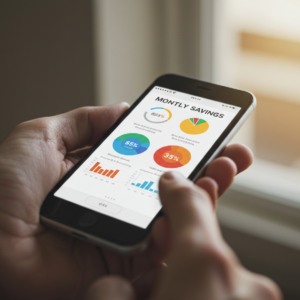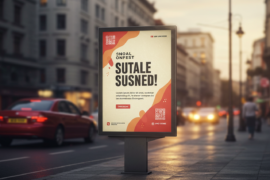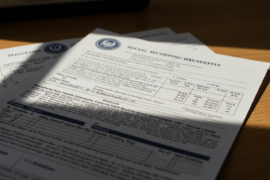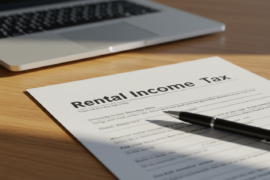This article may contain references to products or services from one or more of our advertisers or partners. We may receive compensation when you click on links to those products or services. Nonetheless, our opinions are our own.
- Understanding the Market Reaction to HBX’s IPO
- Key Factors Behind the Decline in HBX Share Prices
- HBX Group Prices Its IPO at €11.50 per Share
- Learning from HBX: How You Can Use It in Your Investment Plan
- HBX Group Starts Trading on the Spanish Stock Exchanges
- Navigating Your Investments After an IPO Disappointment
- Practical Steps for Investors to Consider Now
- Frequently Asked Questions
- Conclusion
- Recommended Reads
Understanding the Market Reaction to HBX’s IPO
The recent performance of HBX’s shares following its initial public offering (IPO) has sparked significant discussion among investors and market analysts. You might be wondering why the response has been so negative, especially after all the excitement leading up to the public offering. Several key factors could be influencing investor sentiment:
Market Conditions
The broader market environment plays a crucial role. When economic indicators are uncertain or global events create instability, even a well-promoted initial public offering (IPO) can struggle to perform.
Hype vs. Reality
Initial excitement can often drive unrealistic expectations. As the dust settles and more concrete data becomes available, stock prices tend to adjust to reflect the company’s actual performance and outlook—often leading to a drop in value.
Industry Saturation
Concerns about saturation in the travel sector or uncertainty about the industry’s post-pandemic recovery can dampen investor confidence in new entrants like HBX.
Financial Performance
A close examination of HBX’s post-IPO financial reports may reveal concerns about profitability, debt levels, or growth trajectory. These red flags can turn investors away.
To better understand the situation, here’s a summary of HBX’s IPO metrics:
| Metric | Value |
|---|---|
| Initial Share Price | $20 |
| Opening Day Close | $18 |
| Current Price | $15 |
| Market Capitalization | $1.5 Billion |
Understanding these contributing factors can help you make more informed investment decisions. As you monitor HBX’s development, consider both external influences and the company’s internal metrics when evaluating future potential.
The recent decline in HBX’s share price is attributed to several core issues that have unsettled investors.
Firstly, macroeconomic factors and shifting consumer behavior have added volatility to the travel sector. Many investors expected a swift rebound in travel demand post-pandemic, but the actual pace of recovery has been slower than anticipated, raising concerns about HBX’s earnings potential.
Secondly, HBX faces internal challenges. Rising operational costs, delays in launching services, and execution missteps have negatively affected performance. Additionally, media reports questioning the IPO’s pricing and comparing HBX unfavorably to competitors have further eroded investor confidence.
Here’s a breakdown of the contributing factors:
| Factor | Impact on HBX Shares |
|---|---|
| Market Conditions | Increased volatility; lower consumer confidence |
| Operational Challenges | Higher costs; slower growth |
| Negative Media Coverage | Investor skepticism; pricing concerns |
These combined challenges create a complex landscape for HBX. As with any investment, carefully analyzing these factors can help inform smarter decisions in the future.
HBX Group officially priced its IPO at €11.50 per share. This initial valuation aimed to attract interest while reflecting the company’s potential. However, as trading progressed, market sentiment failed to align with the initial pricing, resulting in underperformance.
This pricing decision has since sparked debate among analysts, many of whom believe that HBX overestimated demand or underestimated the competitive landscape. Pricing plays a critical role in IPO success, and in this case, it may have set expectations that were difficult to meet.
Learning from HBX: How You Can Use It in Your Investment Plan
The downturn in HBX’s stock post-IPO offers essential lessons for investors. One major takeaway is that early performance isn’t always indicative of long-term potential. This makes it necessary to conduct thorough research before investing.
Focus on fundamentals like financial health, long-term growth strategy, and market positioning. Don’t get caught up in early hype. Ask yourself:
- What is the company’s unique value proposition?
- How does it compare to competitors?
- What broader market trends are influencing the sector?
Diversification Strategy
Spreading investments across sectors can protect your portfolio from concentrated risks. Here’s a sample diversified allocation strategy:
| Sector | Percentage Investment |
|---|---|
| Technology | 30% |
| Healthcare | 25% |
| Consumer Goods | 20% |
| Travel & Leisure | 15% |
| Financials | 10% |
By applying these lessons from HBX, investors can create well-rounded portfolios that offer a better balance between risk and opportunity. Stay informed, diversified, and focused on the long term.
HBX Group Starts Trading on the Spanish Stock Exchanges
HBX Group began trading on the Spanish Stock Exchanges, marking a significant step in its journey as a publicly traded company. This move provides the company with greater exposure to European investors and could enhance its liquidity over time.
However, the initial trading days have revealed mixed investor sentiment. Continued performance will likely depend on how HBX addresses investor concerns and communicates its roadmap to profitability.
The disappointing performance of HBX following its IPO can be unsettling. While IPOs are exciting, they don’t always yield immediate returns. Here are practical steps to consider:
- Reassess Your Holdings: Review your portfolio. If HBX makes up a large portion, consider rebalancing.
- Monitor Market Trends: Broaden your view. Are travel stocks in general declining? This context matters.
- Stay Patient: Reacting emotionally can lead to poor decisions. Market rebounds take time.
Here’s a table to help evaluate your next steps:
| Action | Consideration |
|---|---|
| Sell | If the company’s fundamentals have changed or the loss is too great. |
| Hold | If you believe in the company’s long-term potential. |
| Diversify | If you’re overexposed to a single sector, mitigate risk by diversifying into other options. |
The right approach depends on your financial goals and risk tolerance. Remaining calm and focused can help you rebound from short-term losses.
Practical Steps for Investors to Consider Now
In light of HBX’s weak IPO performance, it’s a good moment to reassess your broader investment strategy:
- Research Industry Trends: Stay on top of shifts in the travel and leisure industry.
- Diversify: Protect yourself from risk by investing across different sectors.
- Evaluate Financial Health: Prioritize companies with solid balance sheets and manageable debt.
- Define Your Timeline: Match your investments with your goals—whether short-term or long-term.
- Stay Informed: Follow industry news and updates from trusted sources.
| Action | Purpose |
|---|---|
| Research companies | Discover stronger investment opportunities |
| Diversify | Reduce risk and boost long-term returns |
| Regular reviews | Stay adaptable to changing market conditions |
Patience is key. Reacting impulsively to short-term events can undermine long-term results. If unsure, consult a financial advisor to develop a personalized plan.
Frequently Asked Questions
Several factors contributed to the decline, including shifting market conditions, cautious investor sentiment, and concerns over the company’s financial outlook. Optimism about a travel rebound didn’t fully materialize, leading to disappointment.
How did investors react to the IPO?
Investors initially showed strong interest in HBX’s IPO. However, once trading began and volatility hit, many became cautious. This led to early selling, which drove the stock price down.
What does this mean for the future of HBX?
HBX’s future depends on how well it responds to current challenges. Regaining investor trust will require clear communication, sound strategy, and financial improvements.
Are there any lessons for other travel companies from this situation?
Yes. Travel companies should ensure their value propositions are clearly communicated, maintain transparency with investors, and manage expectations carefully. A solid business foundation is essential before going public.
Analysts remain cautiously optimistic. They acknowledge HBX’s strengths in the travel sector but stress the need for improvements in execution and financial performance to rebuild confidence.
Conclusion
HBX’s IPO journey illustrates the unpredictable nature of investing—especially in sectors impacted by external forces like travel. While early enthusiasm can drive strong interest, long-term performance depends on sound financials, market perception, and operational efficiency.
For investors, HBX’s experience is a reminder to conduct thorough research, diversify portfolios, and maintain a long-term perspective. With the right strategy and patience, setbacks can become stepping stones to future success.

Reviewed and edited by Albert Fang.
See a typo or want to suggest an edit/revision to the content? Use the comment form below for feedback.
At FangWallet, we value editorial integrity and open collaboration in curating quality content for readers to enjoy. Much appreciated for the assist.
Did you like our article and find it insightful? We encourage sharing the article link with family and friends to benefit as well - better yet, sharing on social media. Thank you for the support! 🍉
Article Title: HBX IPO: Why Shares Fell 25% and What It Means for Investors
https://fangwallet.com/2025/04/25/hbx-ipo/The FangWallet Promise
FangWallet is an editorially independent resource - founded on breaking down challenging financial concepts for anyone to understand since 2014. While we adhere to editorial integrity, note that this post may contain references to products from our partners.
The FangWallet promise is always to have your best interest in mind and be transparent and honest about the financial picture.
Become an Insider
Editorial Disclaimer: The editorial content on this page is not provided by any of the companies mentioned. The opinions expressed here are the author's alone.
The content of this website is for informational purposes only and does not represent investment advice, or an offer or solicitation to buy or sell any security, investment, or product. Investors are encouraged to do their own due diligence, and, if necessary, consult professional advising before making any investment decisions. Investing involves a high degree of risk, and financial losses may occur including the potential loss of principal.
Source Citation References:
+ Inspo
There are no additional citations or references to note for this article at this time.












































